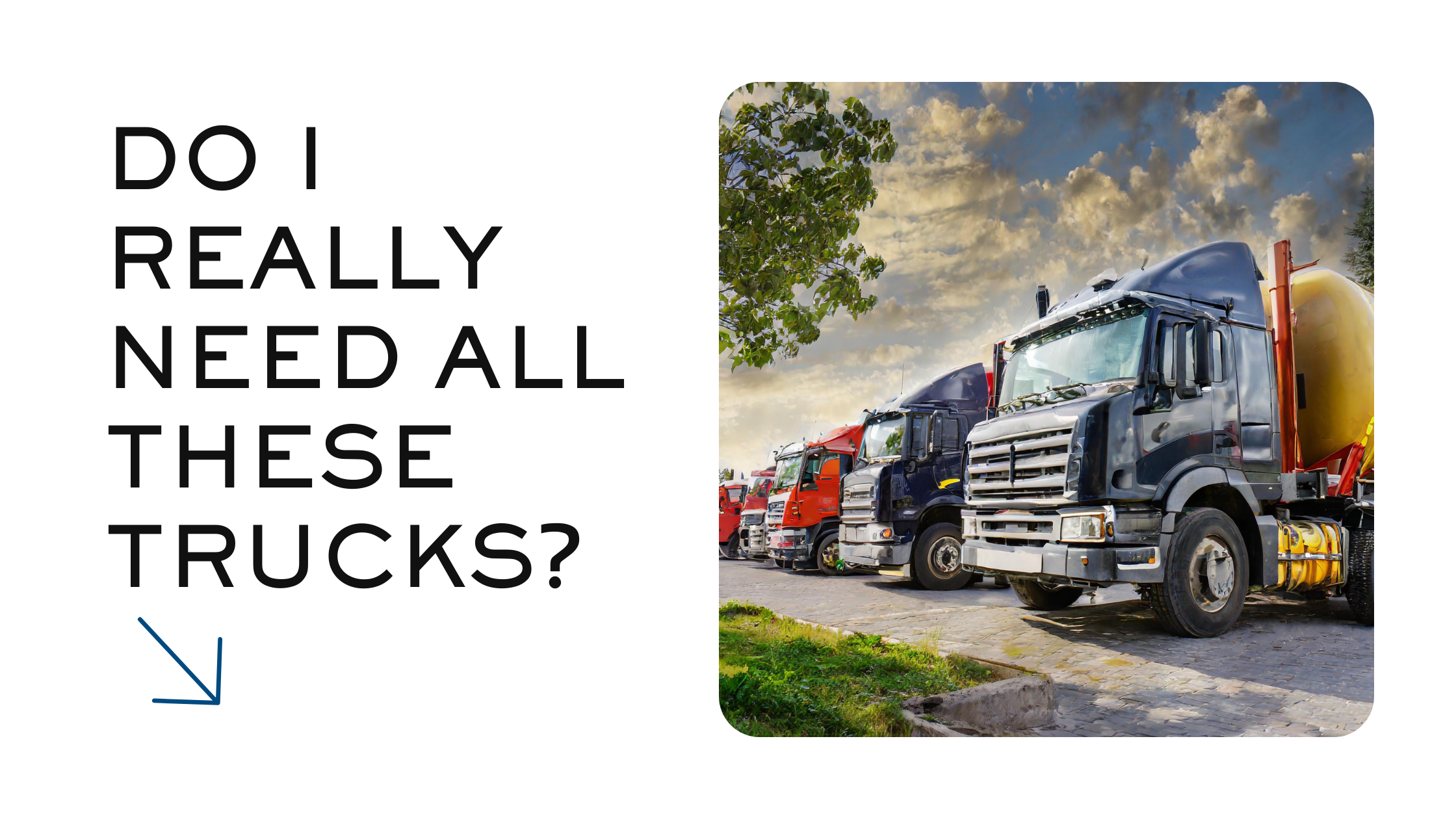When you look out into the yard during the summer, what do you see? Trucks, lots of trucks. Some are out making deliveries, but the rest are there just sitting there, waiting. Trucks are the backbone of your business, and you wouldn’t survive without them – especially when they are needed in the middle of the winter. All my life, I’ve seen full yards in July and nearly empty yards in January. The question of fleet “right-sizing” rarely comes up. Other things come up – supply, prices, interest rates, driver shortages, Russia, Iraq, electrification… the list goes on – but rarely is it “do I really need all these trucks?”
Some of your trucks (the newer ones with automatic transmissions, great suspensions, and strong climate control) are NOT in the yard during the summer, they are on the road 200+ days per year. The older ones are on the road only for a month or two, at the peak of winter. The industry AVERAGE for days delivery trucks are on the road is approximately 100 for heating oil and closer to 115 for propane.
Extending this scenario, a typical company truck averages 450-500 gallons per hour and 8-9 hours per day on the road, delivering around 4,000 gallons per day. 4,000 gallons per day multiplied by 100 days per year gets you 400,000 gallons per truck per year and explains the emptiness or fullness of your yard on any given day.
What if you could increase your hourly deliveries by 10% – another 50 gallons per hour, just 15-20 gallons per stop? What if your trucks were on the road, with stops that are needed, just another 10 days per year? It doesn’t sound all that challenging, and following a straightforward plan is NOT that difficult. Another 500 gallons per truck, per day, and another 10 days on the road doesn’t sound that impactful, but it can take you from 400,000 gallons per year (500 gallons per hour x 8 hours per day * 100 days) to almost 500,000 gallons per year (550 gallons per hour x 8 hours per day * 110 days)!
Real change doesn’t usually occur until after something is broken, not when it’s just starting to break. The slow shift toward smaller deliveries, rising wages, weather uncertainty, and competitive forces are all uniting to put pressure on profit margins, forcing price increases…but there is a breaking point. A company selling 5 million gallons to automatic delivery customers is leaving $250,000 to $500,000 of profits on the table due to all those trucks just sitting in the yard that might not be needed at all.
An intelligent tweak to delivery planning – based on YOUR customers’ tank sizes, K-factors, baseloads, actual and forecasted weather, etc. – can either get rid of one in 5 trucks in your fleet or present an opportunity for more gallons delivered with your existing fleet! Other companies (our clients) are already doing this. There’s no magic here, simply the willingness to bring some modernity into your dispatch planning. When your grandparents started the business, they used the best tools available at the time – which did not include back-office systems, on-board computers, or the internet. Those were all adopted and became your partners for running the best business you could. Now is the time to take the next step and embrace “the same with less, or more with the same” approach rather than sitting back and staring at a yard full of very expensive vehicles that are not all needed.

